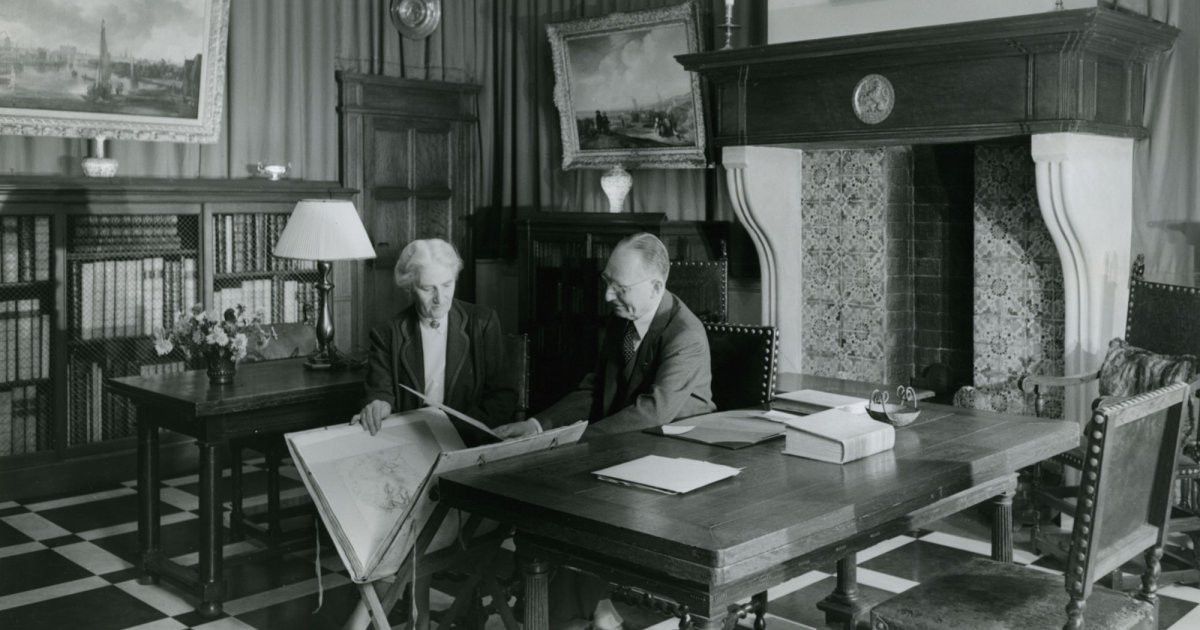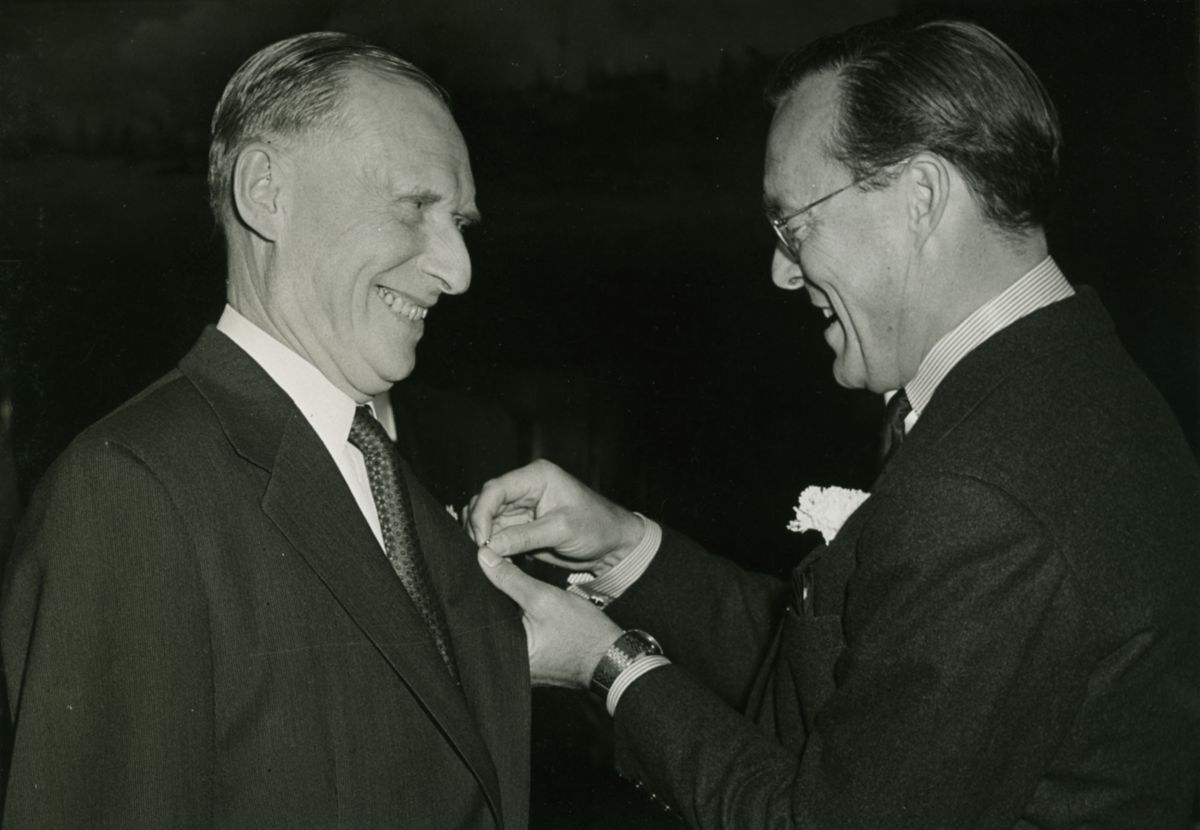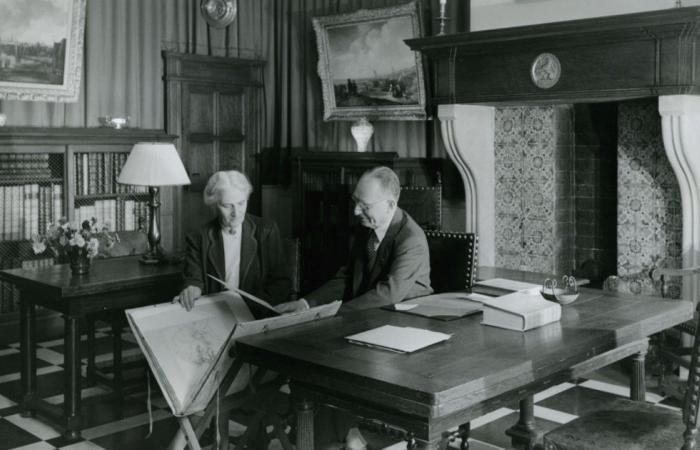– Alice Dekker tells the story of the Lugts with “The collection”
The author writes a novel about real people without making it possible to distinguish truth from fiction. Hence discomfort despite the writing qualities.
Published today at 8:30 p.m.
Frits Lugt in the 1930s, while in the Netherlands.
Fondation Custodia.
Subscribe now and enjoy the audio playback feature.
BotTalk
On October 12 (it’s coming soon!), the Custodia Foundation will inaugurate in Paris in the former Hôtel de Lévis-Mirepoix its exhibition on Italian drawings from the Boijmans Van Beuningen Museum in Rotterdam. It will surely be magnificent. The house always does things well. At the same time, “La collection” by Alice Dekker was released by Arléa, which is a good publisher. This is the novel of this corner of the Netherlands located a few meters from the National Assembly. In other words, the passionate life of Frits and Jacoba Lugt, for whom everything came down to art and beauty. A close couple, she died in 1969 and he in 1970. They created the Foundation in 1947, upon their arrival in France. Their enormous fortune and the works they had accumulated had passed there. Hundreds of Dutch paintings, thousands of drawings and tens of thousands of engravings.
A work that continues
Having remained confidential for a long time, the place is now experiencing real public development. It is a private museum that buys and exhibits. The Lugts had not mummified the institution by prohibiting any modification, or even any enrichment. Their work as historians continues elsewhere. Frits Lugt, who began to haunt the Rijksmuseum in Amsterdam at ten years old and made his first inventories shortly after, thus sponsors from Heaven the updating of the dictionary of collection marks affixed yesterday and today to graphic works . A work that specialists call “the Lugt” as they would say “the Bible”. Everything therefore seems to be going well at Custodia, which has been headed since last year by the Flemish Stijn Alsteens, who we previously knew at Christie’s.

Jacoba and Frits Lugt at the foundation, located in Paris near the National Assembly.
Fondation Custodia.
Alice Dekker, however, intends to evoke the dark aspect of the Lugts in “The Collection”. It shows us two individuals constrained in their certainties, putting the posterity of a patiently united whole above all else. The latter devoured their lives. The couple, however, had five children, of whom they took little care and to whom they gave very little love and warmth. When we are fusional, there is already no more room for others. So think about what it would be like if there is still the famous collection between them and you! The Lugts, however, had a physically disabled son and a daughter suffering from serious psychological problems. That didn’t stop them from shoving this cumbersome kid wherever they could. A descendant that they will end up disinheriting for the benefit of the Queen Foundation. None of its members seemed worthy of such an ensemble, which should at no cost be dismembered or loaned.

Frits Lugt decorated in 1056 by Prince Bernhard of the Netherlands.
Fondation Custodia.
Is this true? Is this wrong? The thing presents itself as a fiction. Alice Dekker had already done it for us with her Louise de Vilmorin entitled “The Sweet Things” in 2022. She also had the painter Chardin speak in “La petite table de lacquer rouge” in 2012. The painter died in the 18th century. Louise is well known thanks to her biographers. There was nothing really serious about it. By appropriating the lives of the Lugts, without relating their apparent coldness to the rigorous Mennonite faith, the author nevertheless causes discomfort. How can we distinguish our inventions from the truth, insofar as the latter exists? Alice Dekker does give as a reference the official biography of the Lugts, published in English by JF Heijbrock in 2010. But this is a difficult work to find. An appendix would have done well here in… the table.
Artificial construction
Otherwise, this is a lively, well-written and enjoyable read. However, it is based on a curious artifice. The narrator is the crippled son, who died at 17. He stays on Earth until around pages 60, then watches his people from beyond. We have had simpler storytelling. The family portrait ends up skewed. However, from the start it was unflattering.
Practical
“The collection” by Alice Dekker, Editions Arléa, Collection 1ᵉʳ/mille, 165 pages.
“Etienne Dumont’s week”
Every Friday, find the cultural news sketched by the famous journalist.
Other newsletters
Log in
Born in 1948, Etienne Dumont studied in Geneva which were of little use to him. Latin, Greek, law. A failed lawyer, he turned to journalism. Most often in the cultural sections, he worked from March 1974 to May 2013 at the “Tribune de Genève”, starting by talking about cinema. Then came fine arts and books. Other than that, as you can see, nothing to report.More info
Did you find an error? Please report it to us.









